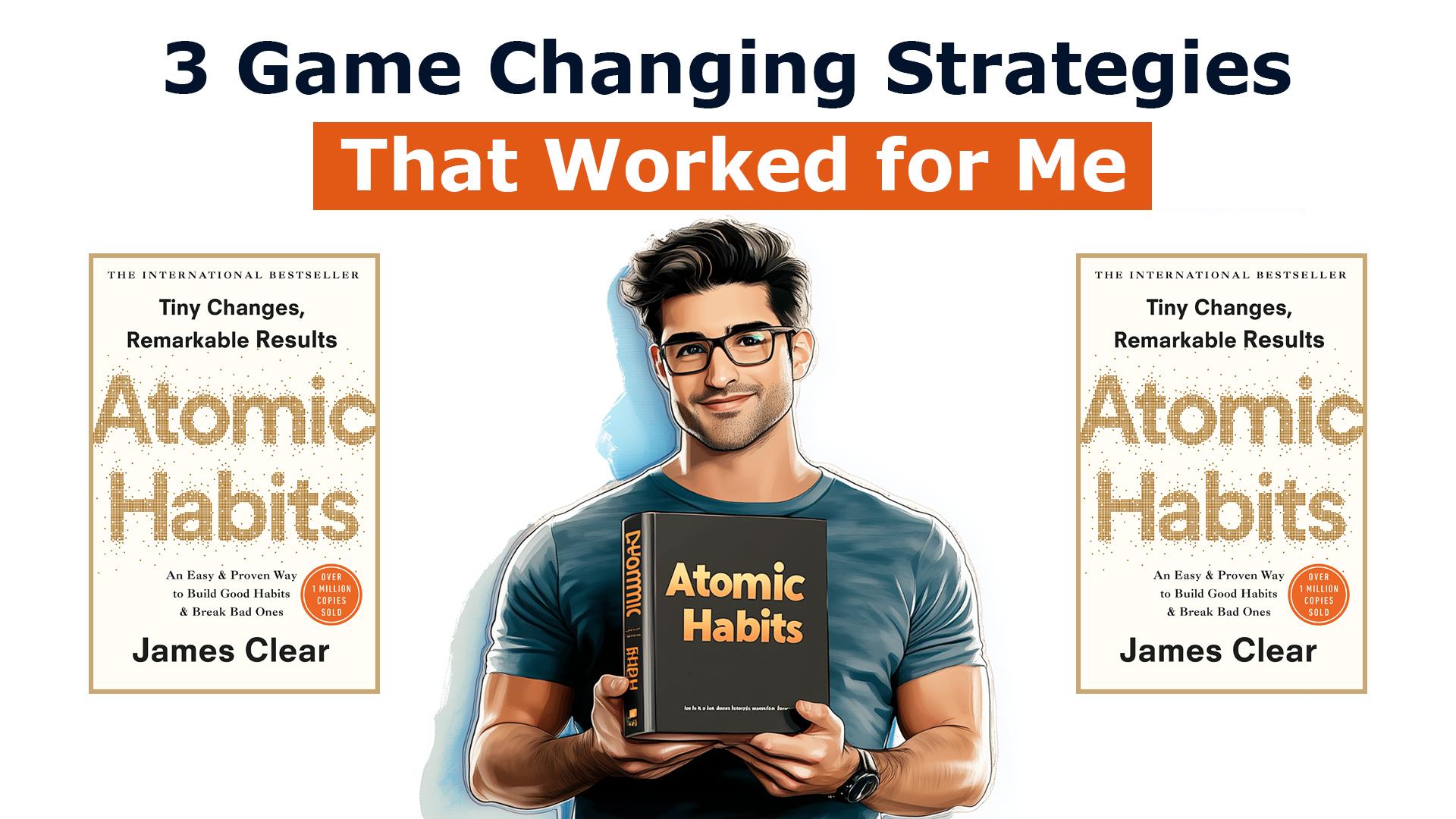Building better habits and breaking bad ones can often feel like an uphill battle. If you’ve ever struggled with this, you’re not alone.
After reading James Clear’s Atomic Habits Book, I discovered a set of practical strategies that transformed my approach to habits, making it easier to create long-lasting, positive change in my life.
What makes this book stand out is its focus on systems and small, incremental improvements rather than relying solely on motivation or willpower.
In this article, I’ll share 3 strategies I’ve personally implemented after reading Atomic Habits. Whether you want to improve productivity, stay consistent with your routines, or make meaningful progress in any area of your life, these strategies provide a solid foundation for success.
Let’s dive into these actionable strategies!
1. The 2-Minute Rule – How to Start Habits That Stick
A key insight from Atomic Habits is that when starting a new habit, we often aim too high, which can make it hard to stick with. In the past, I set overly ambitious goals, such as:
- Working out for an hour every day
- Reading a book a week
- Writing 1,000 words daily
- Quitting social media completely
For example, when I first tried working out for an hour daily, my body wasn’t used to such intensity. Initially, I struggled to complete the workouts, and even when I managed, I was so exhausted afterward that I couldn’t focus on any other planned tasks. This affected my entire schedule, making it impossible to continue, unless I had nothing else planned for the day.
Despite my best intentions, I often found myself slipping back into old routines. This is a common challenge when setting goals that are too ambitious right from the start.
That’s where the 2-Minute Rule comes in. The idea is to start with a version of the habit that takes just two minutes to complete. By making the habit easier to start, you reduce the resistance to beginning, which is often the hardest part.

For example, instead of committing to an hour-long workout, I started by exercising for just two minutes. It felt effortless, and before long, I was gradually extending my workout time. Within weeks, I was comfortably working out for 45 minutes without feeling overwhelmed.
The same approach worked with reading. I began with just two minutes of reading per day. Once I started, I found it hard to stop (unless the book was uninteresting!). Now, I read more than a book a week.
The 2-Minute Rule worked because it removed the initial resistance and allowed me to build momentum, naturally increasing the effort over time.
2. Focus on Systems, Not Goals
One of the most profound lessons from Atomic Habits is the emphasis on systems over goals. While goals provide direction, systems are what actually lead to success.
We often think that goals are essential for motivation and clarity, but they can lead to several issues:
- Goals are result-focused, not process-driven. They tell you what you want, but not how to get there.
- They create an all-or-nothing mindset, where missing a goal feels like failure.
- Once a goal is achieved, progress can stop, limiting long-term growth.
For example, I used to set a goal of selling 500 books per month in my online used bookstore. I tried giving discounts, advertising more, and other strategies, but when I didn’t hit the target, it felt demotivating.

After reading Atomic Habits, I shifted my focus to building systems. Instead of obsessing over the monthly sales number, I focused on organizing my inventory by author and genre and implemented a better labeling system to help customers find what they wanted. I also started tracking customer requests, so I could notify them when books of interest were back in stock.
These systems not only improved the customer experience but also led to a steady increase in sales, often surpassing my original goal. Focusing on systems allowed me to enjoy the process and achieve sustainable progress.
3. Environment Design – Create Spaces that Support Your Habits
One of the most surprising lessons I learned from Atomic Habits was the significant impact of environment design. Your surroundings shape your behaviors more than you may realize. By making small changes to your physical space, you can make good habits easier to adopt and bad habits harder to maintain.

For instance, in my bookstore, I struggled to process new inventory because unsorted books piled up on my desk, leading to procrastination. To fix this, I set up a designated sorting area near the entrance, complete with shelves for new arrivals. This made the process of sorting books faster and reduced clutter, creating a more organized workspace.
This change not only improved my workflow but also increased sales, as customers could easily browse new arrivals. The clearer, more structured environment also helped reduce my stress and boosted my overall productivity.
Here are other areas where environment design helped:
- Streamlined Shipping Routine: By setting up a dedicated shipping station with all supplies—boxes, tape, labels—easily accessible, I streamlined the packing process. This saved time and made the task more efficient.
- Inventory Management System: I introduced a visible tracking system for low-stock items using a whiteboard. Now, I can instantly see which books need restocking, allowing me to stay ahead of inventory shortages.
- Break Area for Mental Recharge: I added a quiet break area in the store where I can relax without leaving the premises. This small space helped me avoid burnout and maintain focus during long workdays.
By intentionally designing my environment, I’ve made it easier to maintain good habits and avoid bad ones. The simpler and more convenient it is to engage in a behavior, the more likely you are to stick with it.
Building better habits isn’t about dramatic overnight changes—it’s about small, consistent steps. After reading Atomic Habits, I’ve implemented these strategies and have already seen meaningful benefits. Focusing on systems, using the 2-Minute Rule, and designing my environment have all had a profound impact on my productivity and consistency.
Remember, progress comes from small, repeated actions. I hope these strategies inspire you to take the first step towards building the habits you want. The journey to lasting change starts today.

